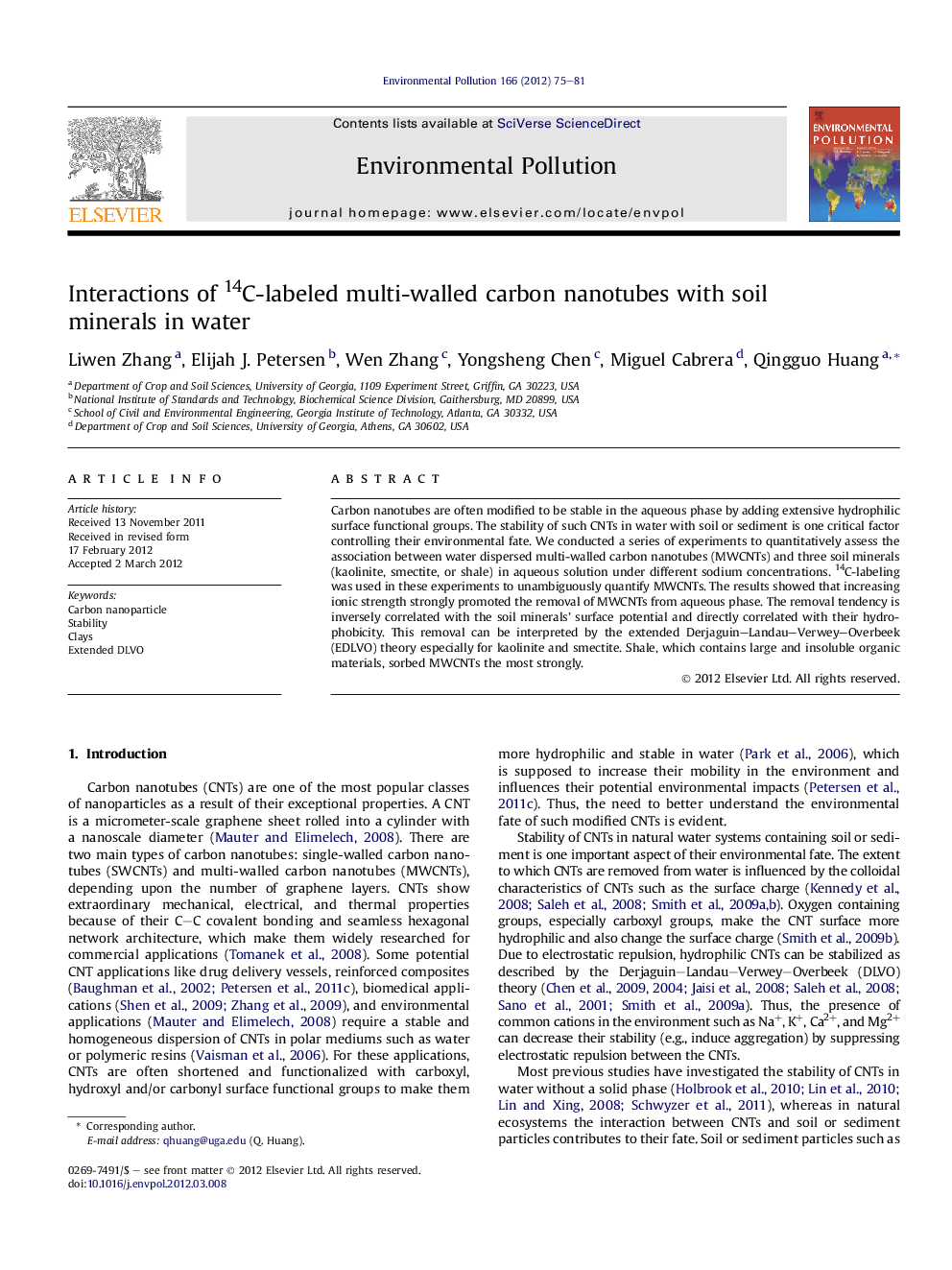| Article ID | Journal | Published Year | Pages | File Type |
|---|---|---|---|---|
| 4425021 | Environmental Pollution | 2012 | 7 Pages |
Carbon nanotubes are often modified to be stable in the aqueous phase by adding extensive hydrophilic surface functional groups. The stability of such CNTs in water with soil or sediment is one critical factor controlling their environmental fate. We conducted a series of experiments to quantitatively assess the association between water dispersed multi-walled carbon nanotubes (MWCNTs) and three soil minerals (kaolinite, smectite, or shale) in aqueous solution under different sodium concentrations. 14C-labeling was used in these experiments to unambiguously quantify MWCNTs. The results showed that increasing ionic strength strongly promoted the removal of MWCNTs from aqueous phase. The removal tendency is inversely correlated with the soil minerals’ surface potential and directly correlated with their hydrophobicity. This removal can be interpreted by the extended Derjaguin–Landau–Verwey–Overbeek (EDLVO) theory especially for kaolinite and smectite. Shale, which contains large and insoluble organic materials, sorbed MWCNTs the most strongly.
Graphical abstractThe stability of multi-walled carbon nanotubes in an aqueous system containing kaolinite, smectite or shale as model soil minerals is investigated using the 14C-labeling technique.Figure optionsDownload full-size imageDownload as PowerPoint slideHighlights► The interactions between MWCNTs and kaolinite, smectite, or shale were probed. ► Surface potential and hydrophobicity of the particles governs their interactions. ► EDLVO can be used to interpret the interactions. ► Insoluble organic materials in shale strongly sorb MWCNTs.
